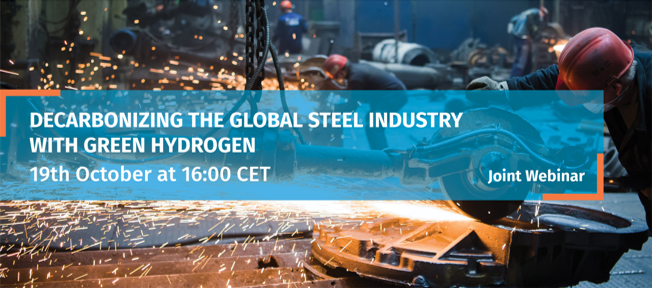| Date | October 19, 2022 |
| Time | 16:00 – 17:30 PM CEST |
| Location | Online |
| Register via | https://www.eventbrite.com/e/424092751837 |
The steel industry, which today still heavily relies on coal for production, is responsible for around 9% of global CO2 emissions . Given that global steel demand is set to increase significantly in the coming years – by 6% until 2030 – it is evident that steel production urgently needs to decarbonize. More precisely, according to the IEA, emissions from steel must decrease by 50% by 2050 to meet global climate goals .
Green hydrogen is one pathway to decarbonize global steel production. This webinar will introduce participants to the key characteristics of using hydrogen in steel production and where this technology stands today compared to other alternatives. During the second half of the webinar, panelists will dive deeper into the implications of decarbonizing the global steel industry with green hydrogen for industrial competitiveness.
We look forward to a great panel:
- Cécile Seguineaud, Analyst, Steel Decarbonization at OECD
- Gokce Mete, Co-Lead, Hydrogen for Net Zero Initiative & Senior Manager, Global Hydrogen Stakeholder Platform at South Pole
- Kajsa Ryttberg-Wallgren, Executive Vice President & Head of Business Unit Hydrogen at H2 Green Steel
- Nouhaïla Nabil, Green Hydrogen Production Manager at IRESEN
- Moderated by Patricia Wild, Co-Lead of WiGH Events Team and Research Associate at EWI
They will take a closer look at the following questions:
- What technologies are available to decarbonize steel production and how ready are they to scale-up?
- What are today’s biggest roadblocks to the use of green hydrogen for steel production?
- What are potential effects of rising steel prices and what does it mean for geospatial distribution of the global steel industry?
- How can we ensure that both developing and emerging economies are part of this decarbonization journey and not left behind?
- How can upstream production be attracted to developing and emerging economies?
